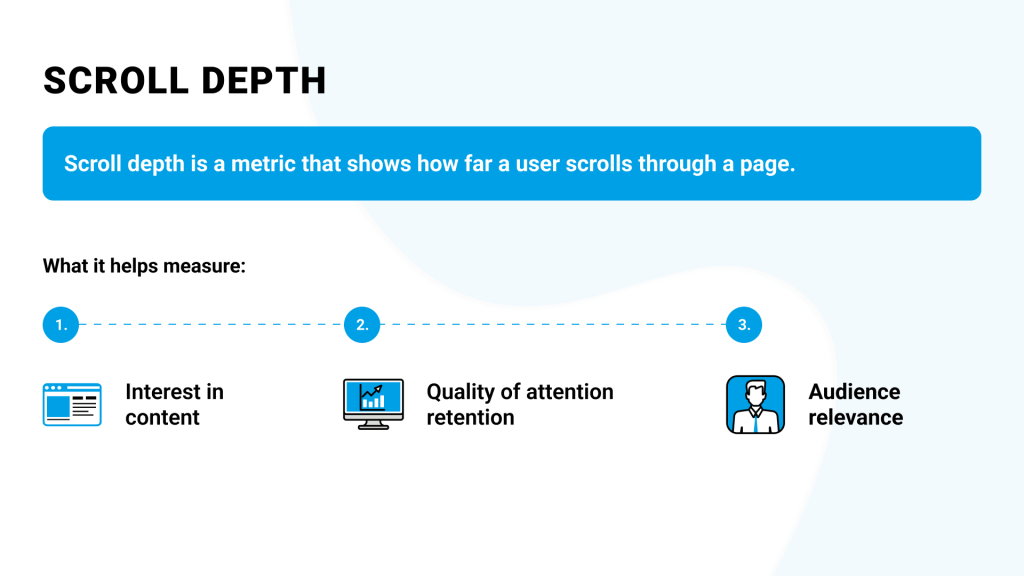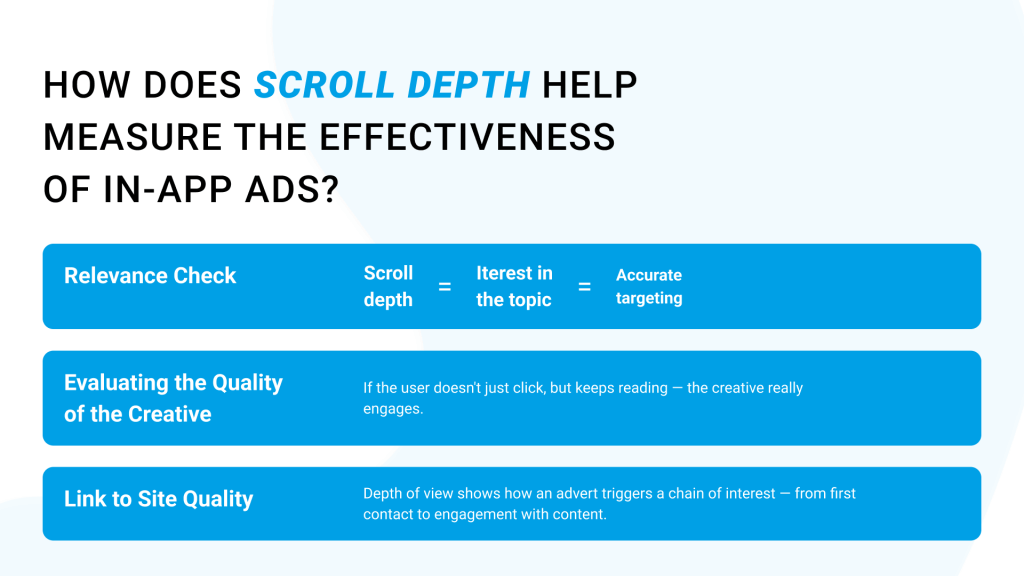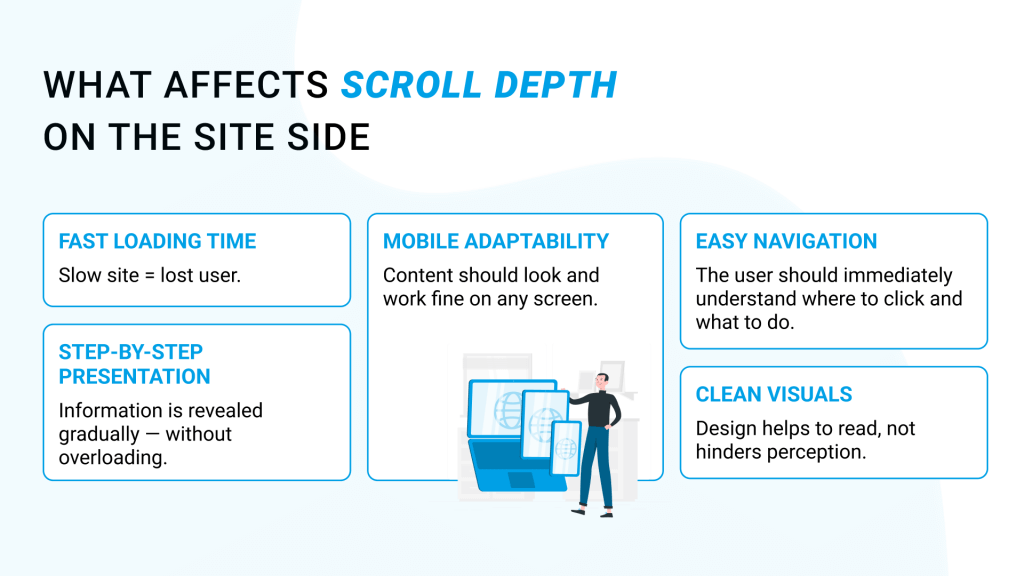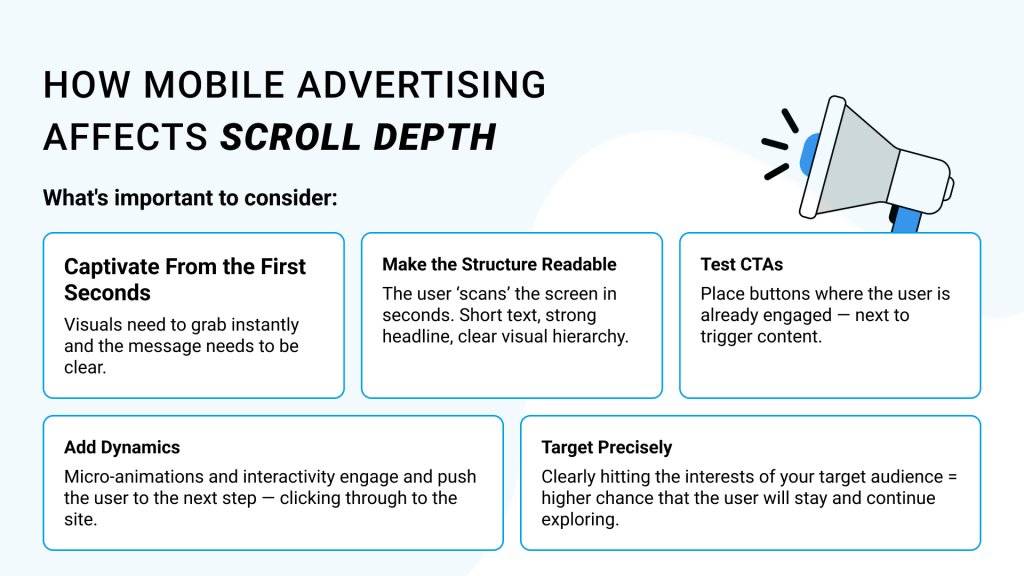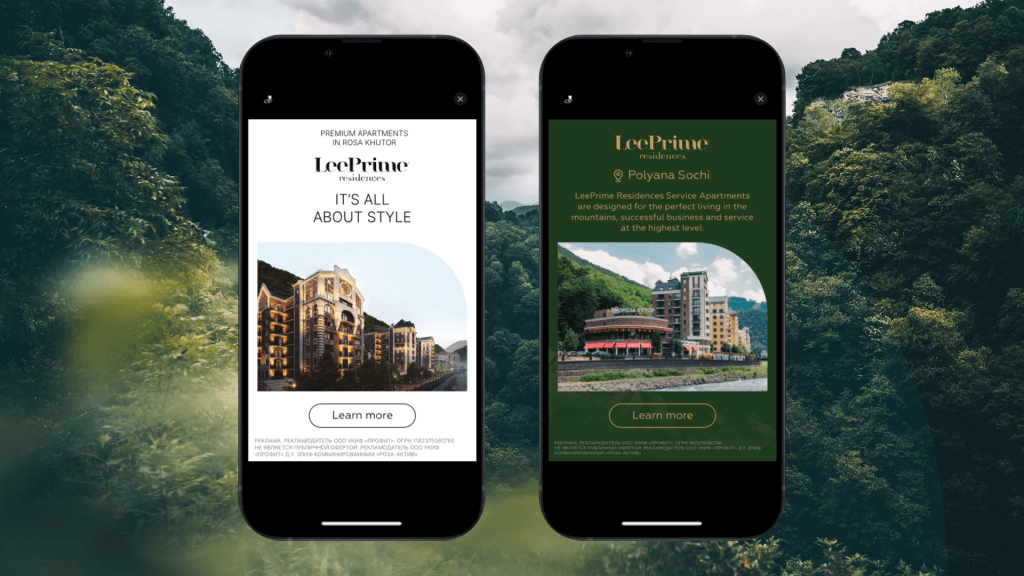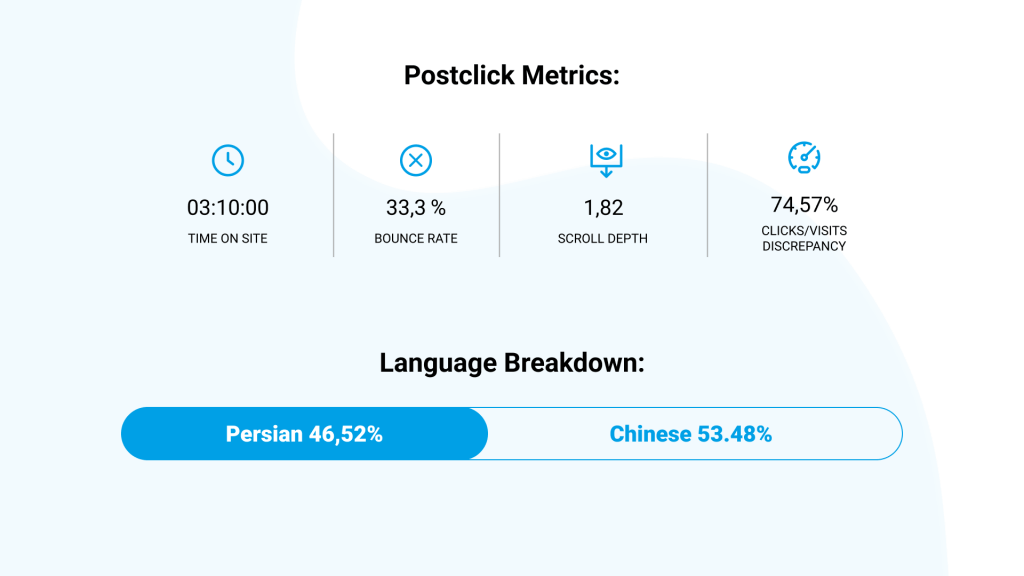Scroll Depth in Mobile Advertising: How to Increase User Engagement
Users are used to scrolling through content on their smartphone screens. It has become a common behaviour. Marketers track it through scroll depth metric.
For mobile advertising, this metric is especially important. It helps to understand post-click performance.
In this post, let’s find out what scroll depth is, what values are optimal for the mobile segment, and how to improve this metric.
What is Scroll Depth?
Scroll depth is a metric that shows how far a user scrolls through a page during a visit.
In digital marketing, it helps to assess:
- Interest in Content
If the user scrolls deeply, it means that the material is really interesting to him. You can draw conclusions about which topics work and which ones don’t.
- Quality of Retention
Low depth is a signal that you need to work on structure, design or loading speed.
- Audience Relevance
If a person stays on the page and keeps reading – you’ve captured their interest. This is valuable for further segmentation and content refinement.
How is Scroll Depth Measured?
The following formula is used to calculate scroll depth:
Scroll depth = number of pages viewed / number of visits
This metric can be tracked in web analytics systems such as Google Analytics and others.
In reports, it is usually labelled as ‘Pages per session’ (in Google) and is calculated automatically based on the data collected.
What is Considered a High Scroll Depth?
Scroll depth metrics depend on the topic of the site and the type of content.
For example:
- 25-50% is considered good for short promotional pages with a strong call to action (CTA), provided the conversion rate is high
- for long-form, educational or informational pages — 70-80% and higher
A low scroll depth (less than 40%) combined with a high bounce rate can signal that the content does not meet user expectations.
It’s important to realise that scroll depth doesn’t give a complete picture in isolation from other metrics. It should be analysed in combination with time on page, clickability and bounce rate.
Why is Scroll Depth Important in Mobile Advertising?
In most mobile campaigns, in-app creatives lead the user to the website. There they experience the brand, explore the offer and possibly make a conversion.
So How Does Scroll Depth Help Measure the Effectiveness of In-App Ads?
Firstly, it shows how relevant the content is to the audience. If a user scrolls the page, it means that the topic has caught their eye and the targeting was accurate.
Secondly, it is an indicator of the quality of creative. Good creative is able not just to attract a click, but to engage — through presentation, format and interactivity. It’s what triggers interest in the topic and motivates you to learn more.
Of course, much depends on the site itself: how convenient, clear and fast it works.
But it is the advert that is the first point of contact, and scroll depth helps to understand how well it copes with its task.
How to Increase Scroll Depth?
In many ways, it depends on the quality of the site. It should:
- Load Quickly
The user won’t wait, especially from mobile. Speed is important at all stages.
- Be Adapted to Mobile Devices
Content, buttons, images — everything should display comfortably on a smartphone screen.
- Have an Intuitive Structure
The user should easily find what they need without unnecessary clicks and scrolls.
- Present Information in a Dosed Manner
Content should engage, but not overwhelm — interest is revealed gradually.
- Be Visually Pleasing and Understandable
A clean design and logical layout help not to get lost in information.
But, as we’ve already said, the first point of contact is mobile advertising.
At this stage you can lay the foundation for deep engagement with the site. Here are the key points to keep in mind:
- Make the Creative Engaging
The visual should hold attention immediately. The key message should be as clear and readable as possible from the first seconds.
- Use a Readable Structure
Users read creative in seconds. Keep the text short, the headline clear and the visuals structured.
- Test CTA Placement
Place the jump button and forms where the user is already engaged — next to strong arguments or after the key message.
- Add Micro-Animations and Interactivity
Smooth transitions, swipes and interactive elements bring your creative to life, generating interest in the next step — visiting and exploring the website.
- Carefully Set Up Targeting
The more precisely the audience is selected, the higher the chance that they will be interested in the offer, go to the site and interact with the content on the site.
BYYD case study
Here is a case where high scroll depth was recorded as part of mobile promotion.
We promoted the Lee Prime brand in mobile applications to attract users to the site and inform the foreign audience about the project.
The focus was on men and women 25+ interested in sport, career, property, with an above average income — they were the ones who might be interested in the premium property offer.
Held two flights, both of which exceeded plans.
Postclick indicators:
- Time on site — 3 min 10 sec (with the norm from 30 sec)
- Refusals — 33.3%
- Scroll depth — 1.82
This is a good indicator: it shows that users did not just click through, but really familiarised themselves with the content, scrolled and navigated through the sections.
In conjunction with other metrics, scroll depth confirmed the effectiveness of promotion on the BYYD platform.
Conclusion
Scroll depth is an important indicator of engagement, especially in mobile. It helps you understand how effectively users are interacting with content.
If you care about mobile advertising results, contact BYYD.
We think through the funnel from the very beginning: at the creative stage we lay down mechanics that engage and lead to action.
Take a look at our case studies and write to launch your campaign.
Found this helpful? Share it with your friends and colleagues!
For consultations and partnership inquiries:
- Submit a request on our website
- Email us at hello@byyd.me
